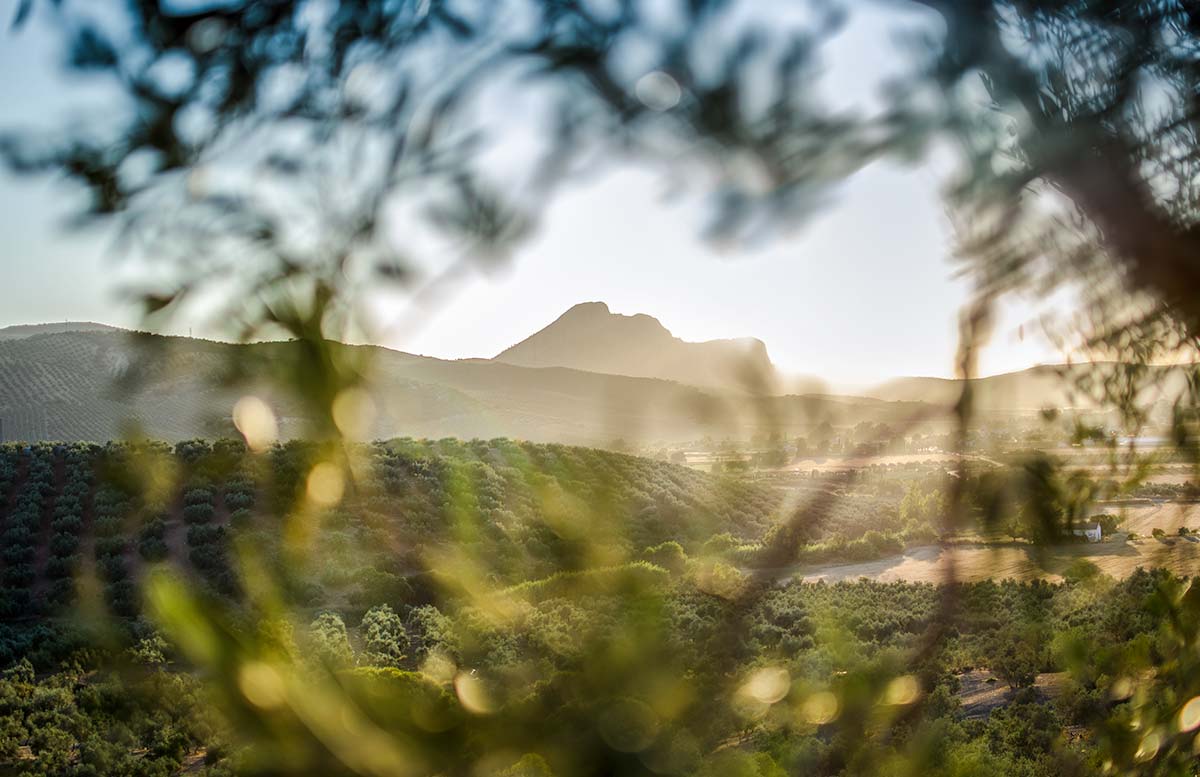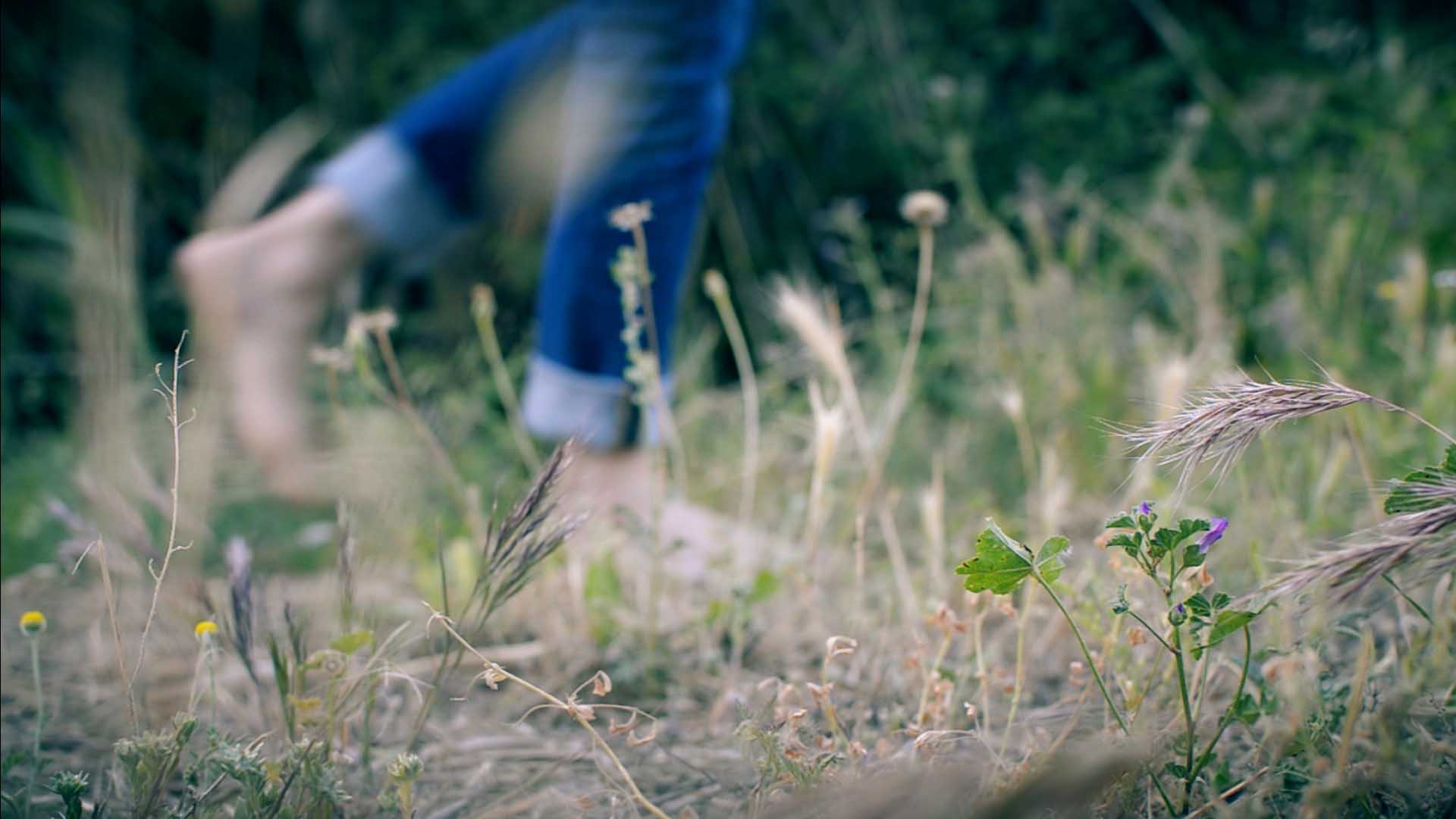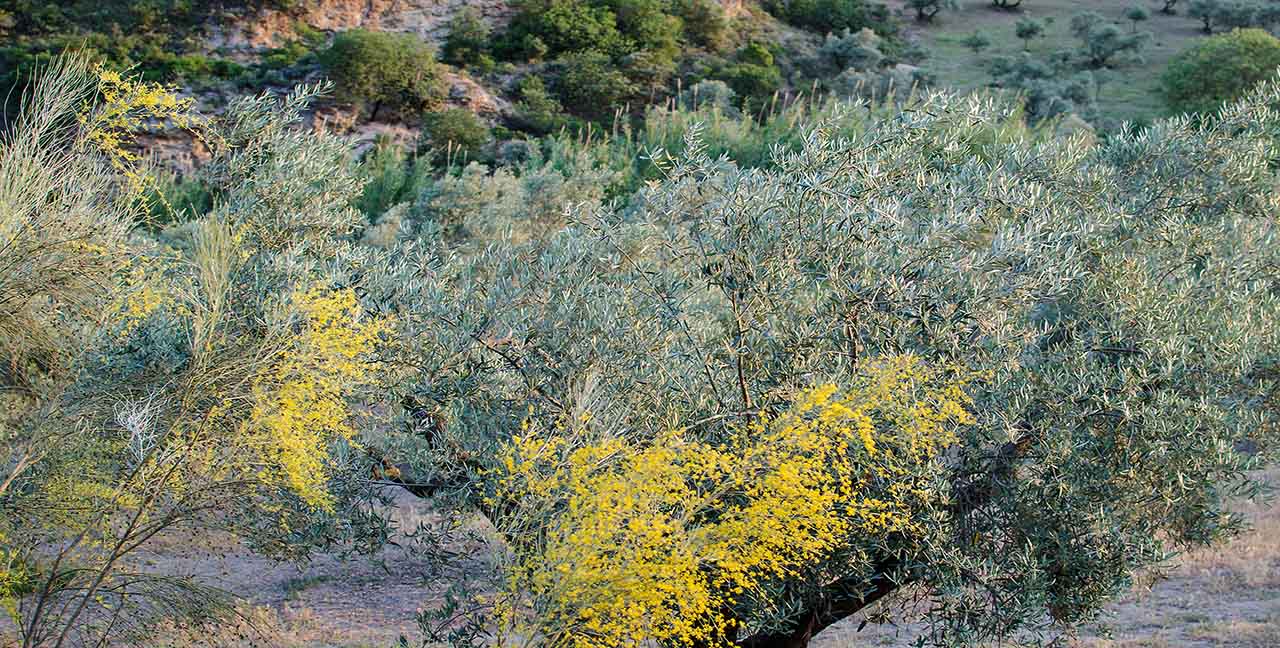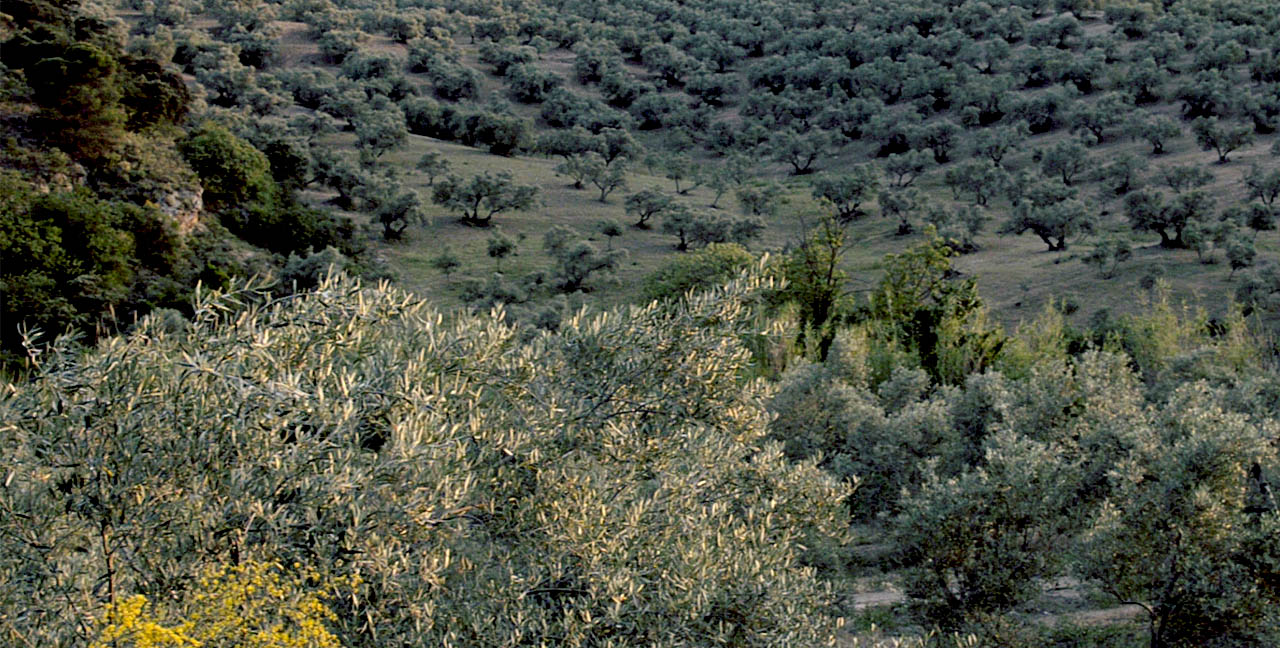MORE THAN JUST AN OLIVE GROVE
La Samiaja is located in Vega de Archidona, between the Peña de los Enamorados and Sierra de Gracia: a place of legend next to the natural site of La Hoz de Marín, where in times of yore Romans and Arabs left their mark. It is a rich and varied ecosystem in which we can find an abundance of Mediterranean forest shrubs such as the retama, caper and asparagus bushes, and trees such as the eucalyptus, the holm oak and wild olive tree varieties. And of course, the traditional olive tree; around 70% of our grounds are dedicated to its cultivation. Wildlife in the area includes hares, deer, foxes and wild boars, and of particular interest are the many species of birds: European bee-eaters, nightingales, barn swallows, hawfinch, kestrels… Our strategic location south of the peninsula and our proximity to important water resources (Laguna de Fuente de Piedra, Reserva Natural de las Lagunas de Archidona) means this territory has become an important bird migration route. It is therefore no surprise that our aim is to preserve this unique habitat. The ecological way in which our olive trees are grown, unlike conventional methods, is free of chemical products and uses techniques that are respectful to the environment. These are related to long-term soil productivity, the use of organic and mineral materials, rainwater harvesting, integrating cover crops… For soil regeneration, we employ the tea compost technique, obtained through the elaboration of ecological liquid fertilisers and which allows us to reincorporate agrarian waste into the ecosystem.





